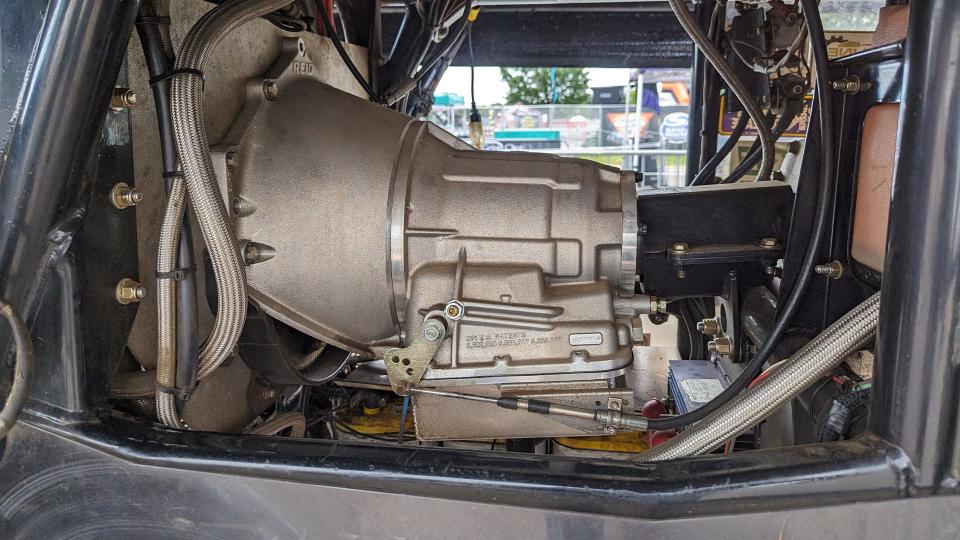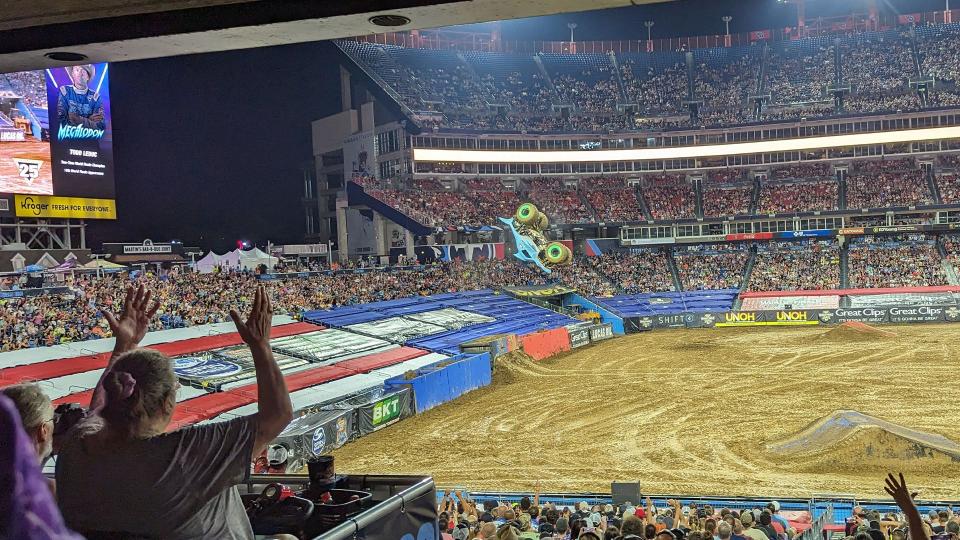Forget F1: You’re All Sleeping on Monster Jam

True gearheads find something to admire in every form of motorsport. Drag racers and drifters, time attack fanatics and rally nuts—they're all one and the same. So, why aren't more of us checking out Monster Jam when those colossal trucks are tearing up arenas across the country?
It takes a lot to sling a 12,000-pound truck some 30 feet into the air. And there’s more to it than hard work and immense courage—Monster Jam also hosts real-deal engineers who help make it the modern marvel that it is. I got to see for myself when I spent the weekend at the Monster Jam World Finals in Nashville, Tennessee. After talking with pros in top-level teams' garages, I learned there's a rich technical element of the sport that I'd been missing out on. Odds are you've been in the dark, too.

That’s what this blog is for. With guidance from folks like veteran driver Tom Meentz, Mohawk Warrior crew chief Matt Del Santer, Monster Jam Senior Director of Track Construction Dan Allen, and Senior Director of Global Operations Jayme Dalsing, we can peel back the curtain on this traveling, high-flying circus. In short, it's not just for kids—it's a heck of a time for the whole crew.
Big Blocks, Big Tires, and Big Engineering
What makes a monster truck? In part, 66-inch BKT tires. These giant hunks of rubber are at the heart of Monster Jam as they’re key for form and function. They’re a long way from those super swampers the baddest truck in your neighborhood is running; each one of these massive tires is nearly 650 pounds, creating quite the demand for power.



Most Monster Jam machines run 540-cubic-inch Chevrolet engines that belt out around 1,500 horsepower. The only two trucks running anything else are Rammunition and Rammulator, which are equipped with 565-cubic-inch, second-generation Hemis built by Hall Brothers Racing to deliver 2,000 fiery ponies. Life is pumped into every Monster Jam Truck by a methanol-burning big block force-fed air through an 8-71 blower to deliver earth-shattering power.
All of that output is sent through a relic two-speed Powerglide transmission. If it’s still good enough for some of the most powerful drag cars, it’s good enough for high-flying monster trucks. From there, it’s then delivered to a two-speed transfer case with a quick-change gear set. Here, teams and drivers can dial in the rig to a particular track or event on the fly. The enormous Clark axles do feature drop-out center sections like you'd find on a Ford 9-inch or Chrysler 8.75, but the smaller gears in the transfer case are much easier to work with.
Monster Jam fans with a keen eye will notice that when the fiberglass bodies are inevitably blasted clear of the chassis, most trucks look the same. While the series doesn't require teams to use a common supplier, most get theirs from a company called Carroll Racing Development.

“We assemble in-house but all of our tubing comes laser cut from CRD," explains Mohawk Warrior crew chief Matt Del Santer. "So just about every truck is actually the same chassis that we dress them up with our own bodies to make 'em all different."
That’s not to say every single truck is the same, though. Builders have the liberty to use different chassis as long as it is compliant with safety regulations. Max-D is a clear example of that, as is Grave Digger, its biggest rival.

“When it comes to our company trucks, they're almost all standard across the board except for Grave Digger. That runs a unique chassis to fit the body," Del Santer continues. "But that's strictly the only reason to fit the iconic Grave Digger body. Max-D is also a very one-off deal as well. That runs coil spring suspension and a front engine. So that truck's a little bit different than all the rest of them.”
It's no surprise that the choices are limited for a chassis that can accommodate such huge... everything. These trucks have 30 inches of suspension travel, and all four of the BKT tires can steer left or right. Factor in all that, along with the obvious need for serious driver safety measures, and only the best of the best can make it happen.

The Show Itself
All of that engineering doesn’t have much appeal if it isn't put to good use. And if you’re under the impression that a script prevents these trucks from being all they can be, you’re dead wrong.
“We’re not WWE, no offense,” Dalsing said. “I wish we had some of their numbers on pay-per-views—I mean, my goodness. So nothing against them by any means, but we’re not. When we hear it’s rigged, it’s like nails on a chalkboard for me. I think that’s kind of a big driving force of we’re not that we want to prove it.”
These trucks run timed races around tight, challenging tracks. They are fairly judged on their two-wheel skills and freestyle performances, and there's no way anyone could fake sending a 12,000-pound truck a measured distance into the air during the high-jump challenge.

 Yahoo Autos
Yahoo Autos 